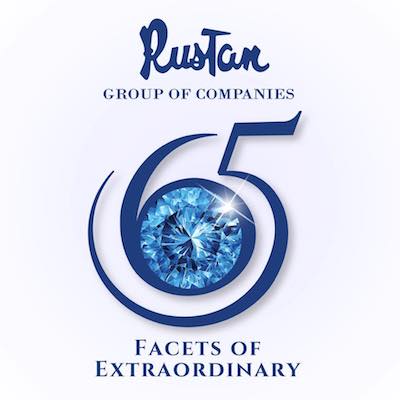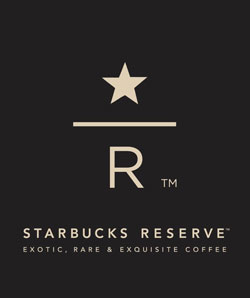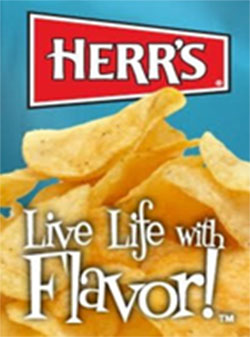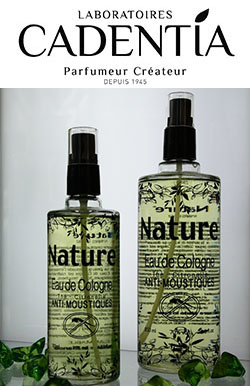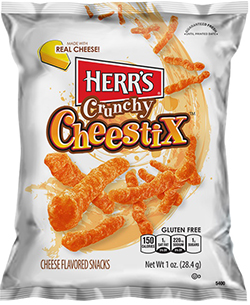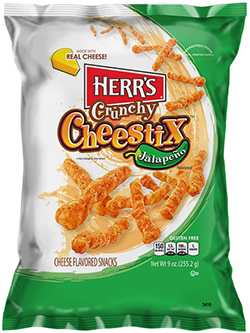Ninety years of beauty and Italian culture. Constantly evolving, as women’s taste hasthroughout the decades.
A family business turned into a global fashion and lifestyle brand. Sharing with the worldthe Italian ideal of elegance, the sense of color, the freedom via modern design, thehighest quality in leather and the highest standards of quality control.
The original store opened by the founder, Aldo Furlanetto, in Bologna, is still operatingtoday in via Ugo Bassi: same address, bearing witness to the history of a company thatgrew from one single store (1955) to 400+ dedicated stores today (half of which aredirectly controlled by the company).
Furla’s history is made of vision, family bonds, and imagination: Aldo Furlanettowas a staunch believer in the possibility for success of a company deeply committed toexcellence – in accessories, in fashion – for its customers. A company whose namewould become a synonym for quality and reliability. For this reason, Mr Furlanettoused to travel all over Italy, all over Europe, looking for the best leather and the mostbeautiful objects of his time. In the 1970s then, when his sons Paolo and Carlo and daughter Giovanna tookover the family business, a new era began for the company, the era of exponentialgrowth.
In the 1970s then, when his sons Paolo and Carlo and daughter Giovanna tookover the family business, a new era began for the company, the era of exponentialgrowth. A revolution that transformed Furla in what it still is today, looking forward to what it willbecome in the future.
A revolution that transformed Furla in what it still is today, looking forward to what it willbecome in the future. The first collection of bags became an overnight success thanks to the precision of itsdesign and the vision of a new customer, a contemporary woman looking for new, cutting-edge materials. The world – and fashion – had evolved: therefore Furla created, fromday one, since the 1970s, classic Italian leather, handmade by artisans, but also newmaterials such as nylon and rubber due to the company’s commitment to research anddevelopment of new technologies, new possibilities.
The first collection of bags became an overnight success thanks to the precision of itsdesign and the vision of a new customer, a contemporary woman looking for new, cutting-edge materials. The world – and fashion – had evolved: therefore Furla created, fromday one, since the 1970s, classic Italian leather, handmade by artisans, but also newmaterials such as nylon and rubber due to the company’s commitment to research anddevelopment of new technologies, new possibilities.
Giovanna Furlanetto and her brothers’ strategy was clear: an Italian network of storesowned by the company linked to a network of franchises – a revolutionary strategy backthen, especially for Italy – to guarantee the family’s strict control on the retail structure.
The 1980’s were the years of the expansion abroad, beyond Italy’s borders. The birth –beginning with Paris and New York; the Tokyo store opened in 1990 – of a distributionnetwork that covered 64 countries; they’re now (2016) 100. The same strategy broughtFurla products to the major global department stores and the elite shopping districtsworldwide – from New York’s Fifth Avenue to Ginza, Tokyo.
In the new Millennium, Furla turned into a Lifestyle Brand: men’s collections, shoes,jewelry, and licensing for eyewear, watches and textiles collections, collaborating with leading brands – to guarantee customers a full Lifestyle experience. The implementation of a new management organization has been innovative: a familybusiness with strong management hired to better steer the company into the future. Furla’s priority has always been the product’s quality: a vision of fashion as freedom,based on the attention to the most minute details, typical of Italian artisanal tradition. The result? Two million bags sold in the year 2015. One every sixteen seconds. Morethan 517,000 Metropolis bags sold since 2014. Numbers that, by themselves, impressive as they are,cannot fully explain Furla’s success. The credit goes to the collections of bags andaccessories in luxurious leathers but also in cutting-edge materials, the attention to Italianstyle, to innovation, R&D and technology, a logo that immediately became recognizableand sought after. And credit is also due to a close – and very Italian – relationshipbetween fashion and culture. The creation of Fondazione Furla for artistic projects represented an additional steptowards Giovanna Furlanetto’s vision for an ever clearer definition of Furla’s values and its global reach.From 2000 to 2015 the company supported “Premio Furla per l’Arte”, an art prize for emerging artists whose submissions have been judged by luminaries such as Joseph Kosuth, Ilya Kabakov, Lothar Baumgarten, Michelangelo Pistoletto, KikiSmith, Mona Hatoum, Marina Abramovic, Christian Boltanski, Jimmie Durham and Vanessa Beecroft.
Furla’s priority has always been the product’s quality: a vision of fashion as freedom,based on the attention to the most minute details, typical of Italian artisanal tradition. The result? Two million bags sold in the year 2015. One every sixteen seconds. Morethan 517,000 Metropolis bags sold since 2014. Numbers that, by themselves, impressive as they are,cannot fully explain Furla’s success. The credit goes to the collections of bags andaccessories in luxurious leathers but also in cutting-edge materials, the attention to Italianstyle, to innovation, R&D and technology, a logo that immediately became recognizableand sought after. And credit is also due to a close – and very Italian – relationshipbetween fashion and culture. The creation of Fondazione Furla for artistic projects represented an additional steptowards Giovanna Furlanetto’s vision for an ever clearer definition of Furla’s values and its global reach.From 2000 to 2015 the company supported “Premio Furla per l’Arte”, an art prize for emerging artists whose submissions have been judged by luminaries such as Joseph Kosuth, Ilya Kabakov, Lothar Baumgarten, Michelangelo Pistoletto, KikiSmith, Mona Hatoum, Marina Abramovic, Christian Boltanski, Jimmie Durham and Vanessa Beecroft.
Numbers tell the story of an exponential growth (revenues more than doubled since 2010) and global reach but they’re not enough: Furla’s culture – and its two-faced soul – thrives via a strong, typically Italian paradigm – the familybusiness – and an equally decisive vocation to global expansion and commerce.
The company’s heart beats inside an Eighteenth Century villa in downtown Bologna, in the Milan headquarters only a few steps from the Duomo, and regional headquarters fully operative in New York, Hong Kong, Tokyo. 90 years of authenticity, in numbers and spirit: a story told in images by the great photographers for Furla’s campaigns: to illustrate Furla’s world, define its heritage, and dream its future.
90 years of authenticity, in numbers and spirit: a story told in images by the great photographers for Furla’s campaigns: to illustrate Furla’s world, define its heritage, and dream its future.
 A handbag as a portable time machine, traveling across nine decades: Furla’s company history, from the beginning of the Twentieth Century to the dawn of the new millennium. Ninety years of history reflected in a handbag and reflected in the flaps that can be replaced one by one, with gusto, playfully, as in a game. As in a portable time machine.
A handbag as a portable time machine, traveling across nine decades: Furla’s company history, from the beginning of the Twentieth Century to the dawn of the new millennium. Ninety years of history reflected in a handbag and reflected in the flaps that can be replaced one by one, with gusto, playfully, as in a game. As in a portable time machine.
A bag, the FURLA Metropolis, available in five possible colors: Petal, Magnolia, Gold, Ruby and Onyx. Nine different fl aps – available in the stores from May – to narrate the story of a brand that began its journey in 1927 and since then hastraveled, in women’s hands, across these ninety years. Keeping them company on their journey of freedom and independence across time and space. A game: replacing the handbag’s flaps, going forward or backwards through the decades.Different colors for a differen t age, and different music. A journey that begins by simply pushing the “Play” button – or lowering the record player’s needle.
 Furla’s journey begins in the Roaring Twenties: the age of Charleston, as romantic as “The Great Gatsby” by Francis Scott Fitzgerald, the wild parties he gave in the French Riviera together with his wife Zelda. The Twenties of JosephineBaker and Art Déco – the age that gave birth to what we now consider modernity, the decade that consigned the Nineteenth Century to history. The flap has a velvet base, and the stud carries the number “20” galvanized in light gold, theflap in soft nappa leather.
Furla’s journey begins in the Roaring Twenties: the age of Charleston, as romantic as “The Great Gatsby” by Francis Scott Fitzgerald, the wild parties he gave in the French Riviera together with his wife Zelda. The Twenties of JosephineBaker and Art Déco – the age that gave birth to what we now consider modernity, the decade that consigned the Nineteenth Century to history. The flap has a velvet base, and the stud carries the number “20” galvanized in light gold, theflap in soft nappa leather.
The journey continues in the Thirties: the Jazz Age, the decade of glamour, of Marlene Dietrich’s mysterious voice and magnetic
eyes. The flap is made of tortoiseshell PVC with ivory colored mink fur, the inscription “30” laser-etched in white on the black tab.
Here are the Forties: the crazed rhythm of Swing, the frenzied joy of music and dance, new songs to celebrate the newfound pe ace. The flap of the Forties handbag is printed with a petal and ruby check, the number “40” printed on leatherruffles and a bow, evocative of that decade’s pin-up girls.
Then the Fifties: the age of rock’n’roll, Elvis and the “greaser” gangs, color exploding into being for the post-WWII decade illuminated by the omnipresent jukebox lights. The flap is pink, turquoise and onyx with embossed colored parts,the number “50” in light gold, the tab iridescent.
The Sixties are the decade of psychedelia and the Beatles, and the cool dry linear elegance of the Mods. The flap is like a turntable resting on a desaturated Union Jack flag, gray black and white instead of the traditional red white and blue.Onyx black on the printed base, a long stud in place of the volume knob, the number “1960” smack in the center, where a vinyl LP’s label would be.
A turntable: the coming of the Seventies and the disco revolution: nights at Studio 54, the decade of glitter and the absolute
freedom of a new underground culture that takes over the world. Glitter fabric, the flat sails and mirrors of Disco Ball hang ing from
the nightclubs’ ceilings, reflecting the light of a future that seemed stranger and more exciting than science fiction.
The Eighties: long live Punk, and New Wave. Fashion as provocation: brooches pinned to Queen Elizabeth’s nose – the epitome of that revolutionary stance. Therefore these are the years, for Furla’s journey, of the heart-shaped flap fastenedwith safety pins, studs and a denim tongue: and a bold, unabashed “Furla 80” printed on the flap.
For the Nineties we travel across the ocean from Great Britain and find ourselves back to the United States: the Age of Hip-Hop, the age of rappers, “gangsta” style and “bling-bling”, the luxury of excess. The Nineties flap is made ofsuede, with an onyx and orange rubberized thermo-adhesive strip, the white stitching like the one over the jersey of a Football team, the number “90” big, smack in the middle of the flap, embroidered with printed, convex leather.
Furla’s time travel, the journey through nine decades of the Metropolis handbag ends in the 2000s, the “Aughts”: the decade of technology, the dawn of the new Millennium. The silver laminate lined with a folding plate, just like a robot’s;the screw-shaped rivets, the shimmering rhinestones: a world expanded and flattened and interconnected by technology, our digital present so unthinkable back in the Twenties when the Furla journey began. A journey across time andspace, all around the world and thro ugh the new century of a new millennium.


